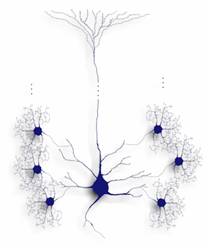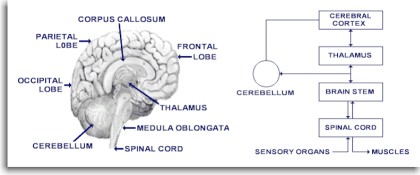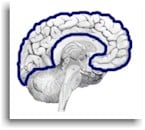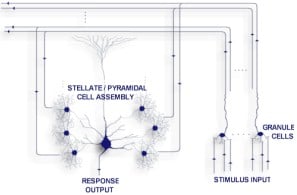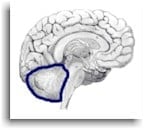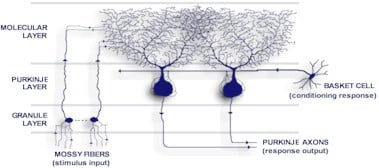The Technology

Overview
Neuromorphic technology refers to the science of understanding structures and processing mechanisms of the brain.
HNeT technology applies the power of holography to the modeling of synthetic neuron cells (through the application of non-linear phase coherence/decoherence principles). Neuromorphic structures and the underlying holographic principles of operation provide a vast increase in capability for machine learning.
To provide a practical example, a neuromorphic assembly will track a human face in real time. This assembly learns facial images by direct exposure, building within its memory all observed forms of an individual, and can subsequently identify that individual within a crowd. It can even determine facial expressions such as smiling or frowning. The functionality demonstrated by HNeT assemblies of this type approaches and even exceeds the limit of current technological capabilities.
HNeT technology is not limited to facial recognition and may be applied to numerous areas within other sectors, such as medicine, process control, automation/robotics, finance, etc.
HNeT
We have constructed an application development for this technology, allowing one to build neuromorphic assemblies and integrate their capabilities into real-world applications. This system is called HNeT.
The HNeT API provides a high level of flexibility in the construction and execution of neuromorphic assemblies, as well as application-level integration, using Windows-based development tools, such as Visual C and Java. This application development system consists of the following two primary components.

Performance Aspects
The following sections summarize a number of performance aspects that are characteristic of holographic neural processing. This material is intended for a technical or engineering audience.
Mathematics
Although the mathematical basis behind HNeT is somewhat abstract, one does not require an in-depth understanding of the theory in order to design and build applications using the HNeT Application Development System. It is important that one understands how information is presented to the system and how the various classes of holographic-based neuron cells interface with each other.
A stimulus-response pattern, association, or "memory" may be represented by a set of values reflecting conditions or states measured within an external environment, such as pressure, temperature, brightness, etc.
During learning, neural cells associate or "map" one set of analog values (i.e., the stimulus fields) to an associated set of values (i.e., the responses). When stimuli are distributed over a time span, one has spatial-temporal or episodic learning.
The mathematical basis for HNeT permits vast numbers of stimulus-response or "associative" patterns to be learned and superimposed onto a vector comprised of complex scalars called the cell's cortical memory. In fact, the number of values used to store cortical memory is often no larger than the number of elements within a single stimulus.
The mechanism for holographic storage displays a capacity to achieve extremely large information densities due to the fact that large numbers of associative memories are superimposed or enfolded onto the same set of storage elements (in other words - computer RAM).
Again, the material provided in subsequent pages is intended for a technical audience.
Other Aspects
There are many other features concerning the HNeT technology. A brief summary of some of these aspects is provided below:
Biology
Neuromorphic science attempts to understand the interconnectivity and signal-processing features of biological neuron assemblies.
Activities have been announced by a number of government and academic institutions regarding attempts to model neurological structures. Most projects focus on the emulation of anatomical form by applying traditional connective methods; however, they lack the performance benefits of holographic processing and information superposition.
We believe that principles of holographic learning and superposition are of primary importance in the realization of advanced capabilities demonstrated by biology.
If you would like to further understand how HNeT interprets the science of biology, this information is summarized in the following pages.
 416 920 8260
416 920 8260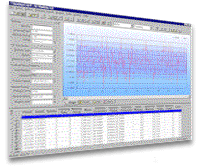

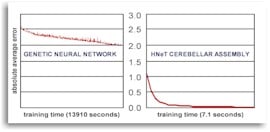
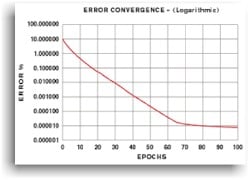
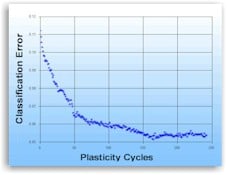
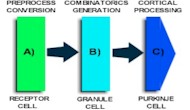
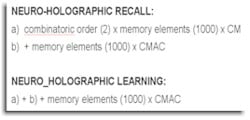


 The phase coherence/decoherence principle is illustrated for stimulus learned at t1. Each prior learned stimulus-response pattern may be recalled quite accurately following even a single training exposure, and again, all memory traces reside concurrently within the same set of computer bytes (cortical memory elements).
The phase coherence/decoherence principle is illustrated for stimulus learned at t1. Each prior learned stimulus-response pattern may be recalled quite accurately following even a single training exposure, and again, all memory traces reside concurrently within the same set of computer bytes (cortical memory elements).


